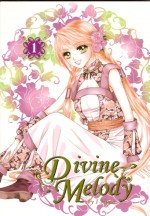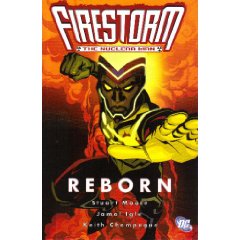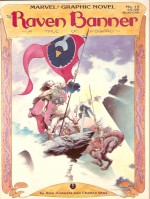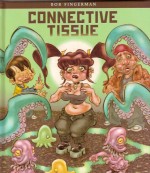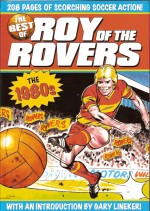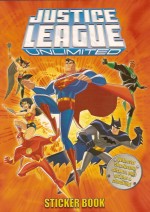
By Stan Lee, Jack Kirby, Joe Sinnott & various (Marvel)
ISBN: 978-0-7851-2625-6
This third collected black-and-white volume of the “World’s Greatest Comic Magazine!” certainly lives up to its own hype as it re-presents those tales wherein Jack Kirby finally unleashed his vast imagination and Stan Lee scripted some of the most passionate superhero sagas that Marvel – or any publisher, for that matter – has ever produced. Both were at the height of their creative powers, and full of the confidence that only success brings, with Kirby in particular eager to see how far the genre and the medium could be pushed.
The wonderment begins with the first part of a tense and traumatic trilogy (inked by Vince Colletta) in which the Frightful Four – Wizard, Sandman, Trapster and the enigmatic Madame Medusa – brainwash The Thing and turn him against his former team-mates. It started in Fantastic Four # 41 (August 1965) with ‘The Brutal Betrayal of Ben Grimm!’, continued in rip-roaring fashion with ‘To Save You, Why must I Kill You?’ and concluded in bombastic glory with #44’s ‘Lo! There Shall be an Ending!’
After that Colletta signed off by inking one of the most crowded Marvel stories ever. Fantastic Four Annual #3 featured every hero, most of the villains and lots of ancillary characters (such as teen-romance stars Patsy Walker & Hedy Wolf and even Stan and Jack themselves) in the company pantheon. In ‘Bedlam at the Baxter Building!’ Reed Richards and Sue Storm finally wed, despite being attacked by an army of baddies mesmerised by the diabolical Doctor Doom. In its classical simplicity it signalled the end of one era and the start of another…
FF #44 was a landmark in many ways. Firstly it saw the arrival of Joe Sinnott as regular inker, a skilled brush-man with a deft line and a superb grasp of anatomy and facial expression, and moreover an artist prepared to match Kirby’s greatest efforts with his own. Some inkers had problems with just how much detail the King would pencil in; Sinnott relished it and the effort showed. What was wonderful now became incomparable.
‘The Gentleman’s Name is Gorgon!’ introduced a mysterious powerhouse with metal hooves instead of feet, a hunter implacably stalking Madame Medusa, who embroiled the Human Torch and thus the whole team in her frantic bid to escape, and that’s before the monstrous android Dragon Man showed up to complicate matters. All this was merely a prelude: with the next issue we were introduced to a hidden race of super-beings that had secretly shared the Earth with us for millennia. ‘Among us Hide… the Inhumans’ revealed that Medusa was part of the Royal Family of Attilan, a race of paranormal beings on the run ever since a coup deposed the true king.
Black Bolt, Triton, Karnak and the rest would quickly become mainstays of the Marvel Universe, but their bewitching young cousin Crystal and her giant teleporting dog Lockjaw were the real stars here. For young Johnny Storm it was love at first sight, and Crystal’s eventual fate would greatly change his character, giving him a hint of angst-ridden tragedy that resonated greatly with the generation of young readers who were growing up with the comic…
‘Those Who Would Destroy Us!’ and ‘Beware the Hidden Land!’ (FF #46 and 47) saw the team join the Inhumans as Black Bolt regained his throne from his brother Maximus the Mad, only to stumble into the usurper’s plan to wipe humanity from the Earth.
Ideas just seem to explode from Kirby at this time. Despite being halfway through one storyline, FF #48 trumpeted ‘The Coming of Galactus!’ and the first Inhumans saga was swiftly wrapped up by page 6, with the entire race sealed behind an impenetrable dome called the Negative Zone (later retitled the Negative Barrier to avoid confusion with the gateway to sub-space that Reed worked on for years).
Meanwhile a cosmic entity approached Earth, preceded by a gleaming herald on a surfboard of pure cosmic energy. I suspect this experimental – and vaguely uncomfortable – approach to narrative mechanics was calculated and deliberate, mirroring the way that TV soap operas were increasingly delivering their interwoven storylines, and a way to keep the readers glued to the series.
They needn’t have bothered. The stories and concepts were enough…
‘If this be Doomsday!’ saw the planet-eating Galactus set up shop above the Baxter Building despite the team’s best efforts, whilst his cold and shining herald had his humanity rekindled by simply conversing with the Thing’s blind girlfriend Alicia. Issue #50’s ‘The Startling Saga of the Silver Surfer!’ concluded the epic in grand style as the reawakened humanity of the Surfer and heroism of the FF bought enough time for Richards to literally save the World. Once again the tale ended in the middle of the issue, and the remaining half concentrated on the team getting back to “normal”. To that extent Johnny Storm enrolled at Metro College, desperate to forget his lost love Crystal and his unnerving jaunts to the ends of the universe. On his first day, the lad met the imposing and enigmatic Native American Wyatt Wingfoot, destined to become his greatest friend…’
Fantastic Four #51 is considered by many the greatest single FF story ever. ‘This Man… This Monster!’ found the Thing’s body usurped by a vengeful and petty scientist who subsequently discovered the true measure of a man, whilst another innovation and great character debuted in the next issue.
‘The Black Panther!’ was an African monarch whose secretive kingdom was the only source of a vibration-absorbing alien metal. These mineral riches had enabled him to turn his country into a technological wonderland. He attacked the FF as part of an extended plan to gain vengeance on the murderer of his father. He was also the first Negro superhero in American comics (Fantastic Four #52, cover-dated July 1966). His origin was revealed in ‘The Way it Began..!’, which also introduced sonic super-villain Klaw. Johnny and Wyatt then embarked on a quest to find Crystal but discovered instead the lost tomb of Prester John in #54’s ‘Whosoever Finds the Evil Eye…!’
Imprisoned on Earth the brooding ex-herald of Galactus had become an instant fan-favourite, and his regular appearances were always a guarantee of something special. ‘When Strikes the Silver Surfer!’ found him in uncomprehending, brutal battle with the Thing, whose insecurities about Alicia had turned into searing jealousy, whereas it was business as unusual when ‘Klaw the Murderous Master of Sound!’ attacked again in # 56.
Throughout all the issues since their imprisonment a running sub-plot with the Inhumans had been slowly building, whilst the on the other side of the Great Barrier, Johnny and Wyatt wandered the wilds also seeking a method of liberating the Hidden City. Their quest led directly into the landmark tale ‘The Torch that Was!’: lead feature in the fourth FF Annual (1966), in which The Mad Thinker resurrected the original Human Torch (actually the World’s first android) to battle destroy the flaming teenager…
Fantastic Four #57-60 displayed Lee and Kirby at their very best; with incredible drama and action on a number of fronts as the most dangerous man on Earth stole the Silver Surfer’s power, the Inhumans finally won their freedom and we discovered the tragic secret of Black Bolt in all its awesome fury. It all began with a jailbreak by the Sandman in #57’s ‘Enter… Dr. Doom!’, continued in ‘The Dismal Dregs of Defeat!’ and ‘Doomsday’ culminating in brains saving the day and humanity in magnificent manner with ‘The Peril and the Power!’
But there was never a dull moment: no sooner had they relaxed than a new and improved foe resumed his aborted attack in #61’s ‘Where Stalks the Sandman?’, another explosive multi-part tale wherein Johnny and Crystal were reunited, the Surfer regained his stolen power and Reed was lost to the anti-matter hell of the Negative Zone’s sub-space corridor.
‘…And One Shall Save Him!’ guest-starred Triton and the newly liberated Inhuman Royal Family, and saw the introduction of another unique enemy, who followed Reed back from the anti-matter universe and straight into partnership with the Sandman. The battle against ‘Blastaar, the Living Bomb-Burst!’ (FF #63, June 1967), concludes the incredible run of superb stories in this volume, but there was still room to include some fascinating freebies in the form of pages of original art, the initial designs for Coal Tiger (who became Black Panther) and an unused cover for #52.
These are the stories that cemented Marvel’s reputation and enabled the company to overtake all its competitors. They’re also still some of the best stories ever produced and as exciting and captivating now as they ever were. This is a must-have book for all fans of graphic narrative.
© 1965, 1966, 1967, 2007 Marvel Characters, Inc. All Rights Reserved.
